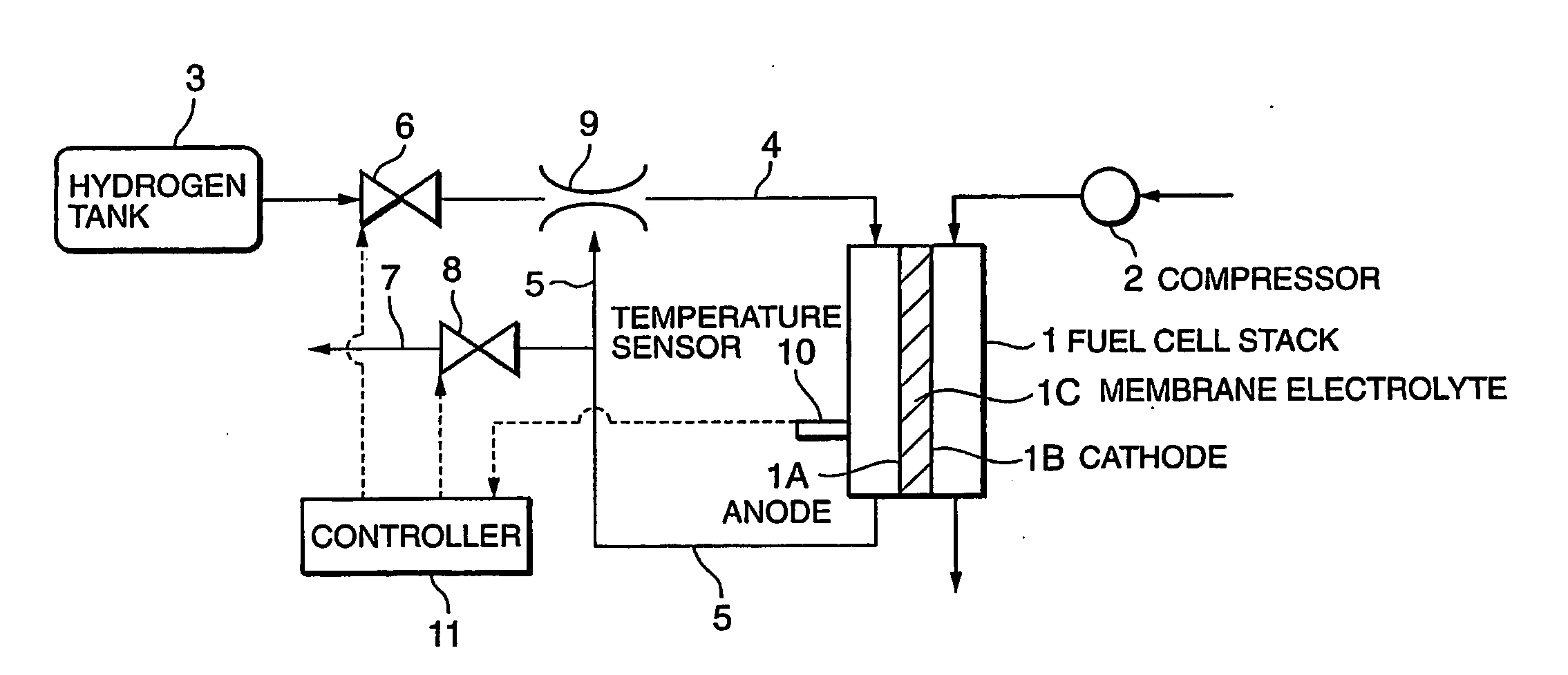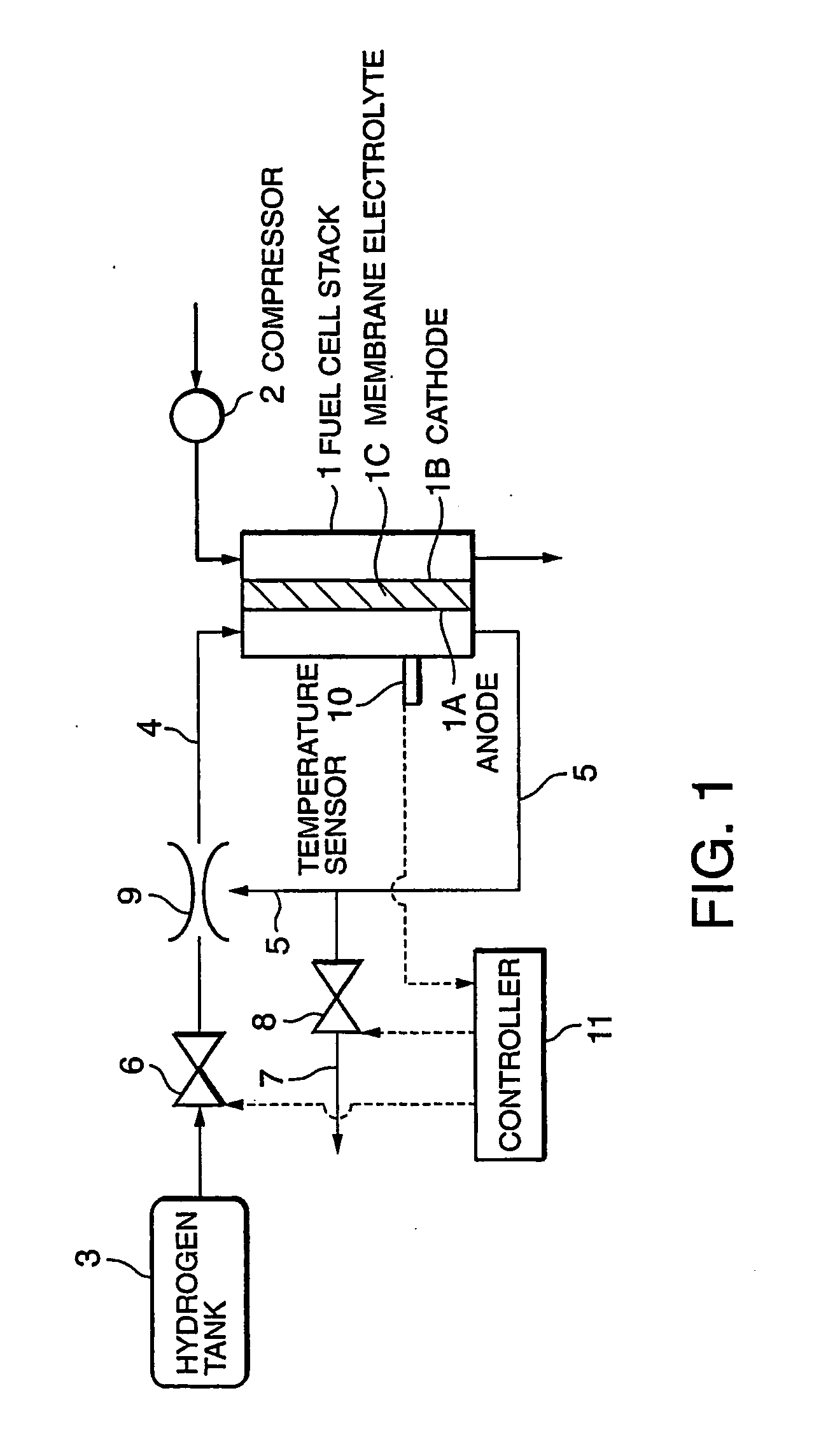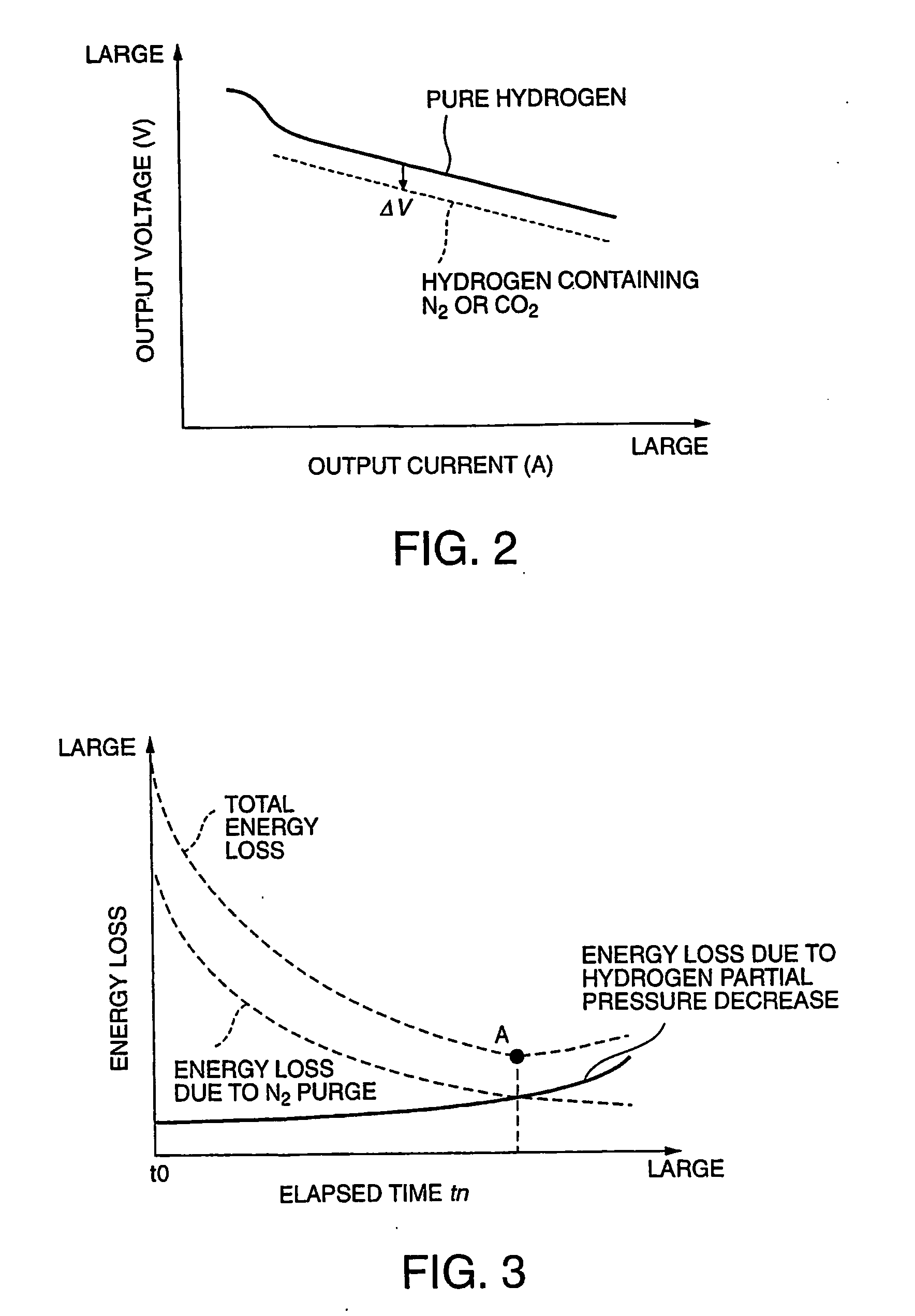Anode effluent control in fuel cell power plant
a fuel cell and effluent technology, applied in the direction of fuel cells, fuel cell components, fuel cell groupings, etc., can solve the problems the expected improvement of the power generation efficiency cannot be realized, and the hydrogen gas to be used in the power generation reaction is lost, so as to improve the effect of reducing the power generation efficiency of the fuel cell and improving the power generation efficiency
- Summary
- Abstract
- Description
- Claims
- Application Information
AI Technical Summary
Benefits of technology
Problems solved by technology
Method used
Image
Examples
second embodiment
[0071] Next, this invention will be described with reference to FIGS. 8-13.
first embodiment
[0072] Referring to FIG. 8, in addition to the constitution of the first embodiment, this embodiment comprises an air supply passage 12, an air supply valve 13, a catalyst 14, and a pump 15. However, the ejector 9 has been omitted from this embodiment.
[0073] The catalyst 14 is provided at a point on the return passage 5. The catalyst 14 functions to remove carbon monoxide (CO) from the anode effluent by means of selective oxidation of the carbon monoxide contained in the anode effluent. The oxidized carbon monoxide thus turns into carbon dioxide (CO2).
[0074] The air supply passage 12 is provided to supply air, which serves as the oxidizing agent used by the catalyst 14, from the compressor 2. The air supply passage 12 is connected to the return passage 5 upstream of the catalyst 14. The air supply valve 13 serves to adjust the air supply flow through the air supply passage 12.
[0075] The pump 15 is provided on the return passage 5 downstream of the catalyst 14, and serves in place ...
third embodiment
[0134] Next, referring to FIG. 14, this invention will be described.
[0135] In this embodiment, a recording device 16 using an integrated circuit (IC) is annexed to the hydrogen tank 3 of the fuel cell power plant according to the second embodiment. The CO concentration of the hydrogen that is stored in the hydrogen tank 3 is recorded on the recording device 16. The CO concentration data are extracted when the hydrogen tank 3 is refilled with hydrogen by means of data communication between the recording device 16 and a refill station which refills the hydrogen tank 3 with hydrogen.
[0136] In cases where the hydrogen for refilling the hydrogen tank 3 contains impurities caused by other inert gases, the recording device 16 preferably records further impurity concentration data.
[0137] The recording device 16 and controller 11 are connected by a signal circuit, and the CO concentration and impurity concentration are provided to the controller 11 as signals. Similarly to the second embod...
PUM
| Property | Measurement | Unit |
|---|---|---|
| energy loss | aaaaa | aaaaa |
| partial pressure | aaaaa | aaaaa |
| temperature | aaaaa | aaaaa |
Abstract
Description
Claims
Application Information
 Login to View More
Login to View More - R&D
- Intellectual Property
- Life Sciences
- Materials
- Tech Scout
- Unparalleled Data Quality
- Higher Quality Content
- 60% Fewer Hallucinations
Browse by: Latest US Patents, China's latest patents, Technical Efficacy Thesaurus, Application Domain, Technology Topic, Popular Technical Reports.
© 2025 PatSnap. All rights reserved.Legal|Privacy policy|Modern Slavery Act Transparency Statement|Sitemap|About US| Contact US: help@patsnap.com



